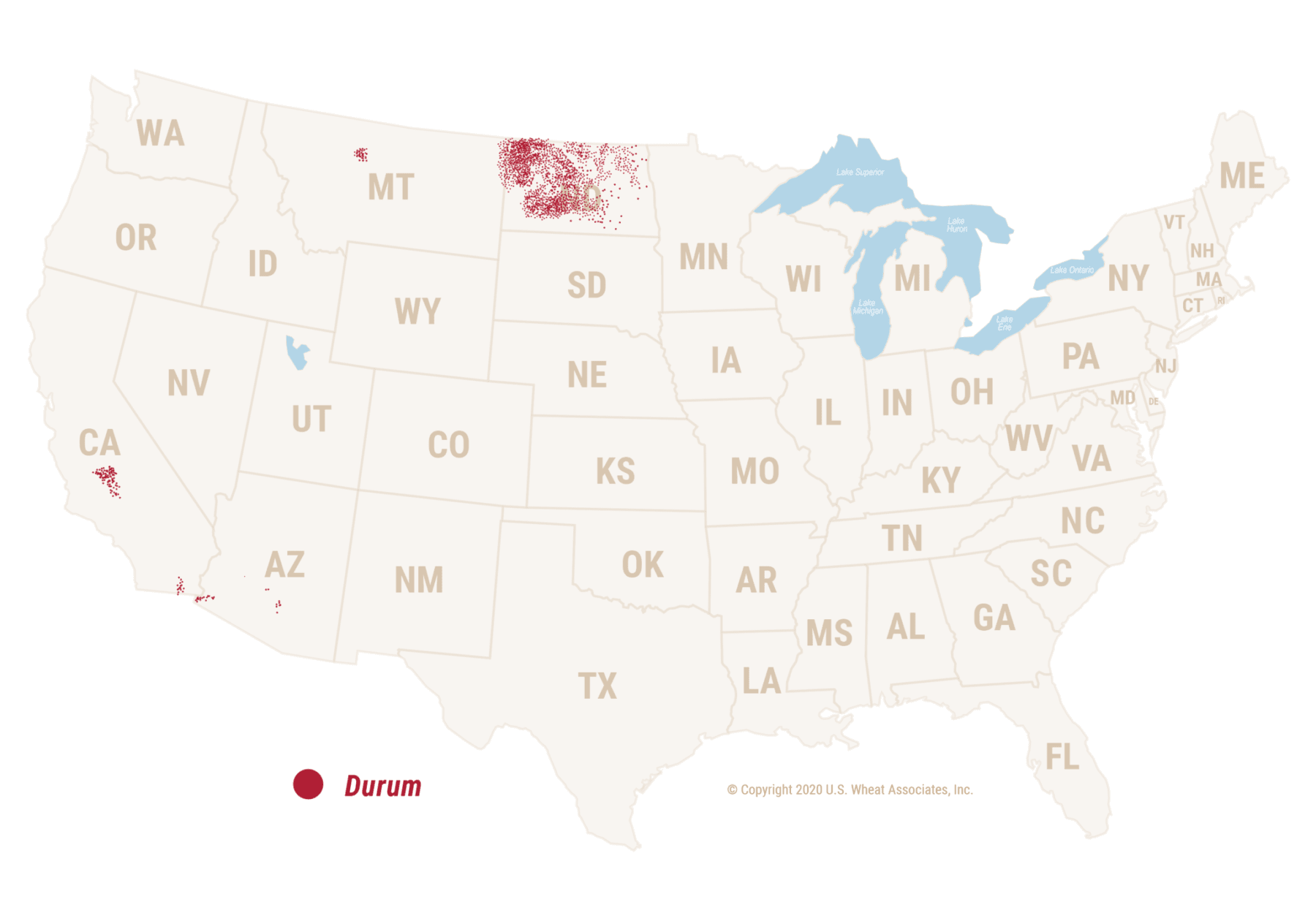Durum Wheat
Durum is one of the 6 classes of U.S. wheat. The hardest of all U.S. wheat classes, U.S. durum kernels have a rich amber color and high protein (aka gluten) content. Hard Amber Durum sets the “gold standard” for premium pasta products, couscous and some Mediterranean breads.
WHERE IS U.S. DURUM GROWN?
HOW IS PASTA MADE?
U.S. durum makes the finest quality flour to create pasta, which can be made in all shapes and sizes. In its purest form, pasta is water and durum semolina flour. Semolina is flour made from durum wheat. It’s usually a little more coarse than all-purpose or bread flour, which can help sauces cling to your noodles better. It has higher protein than flour made from other classes of wheat, so it helps pasta keeps its shape when you cook it. It’s also more golden in color than other flours, which makes pasta yellow! This flour is enriched with B-vitamins and iron before it gets shipped to pasta plants.
At a pasta plant, the semolina flour will be mixed with warm water, and kneaded to make a dough. Eggs can be added to make egg noodles. The dough is pressed into sheets by large rolling pins. The dough also goes through a steamer, which heats it and kills any existing bacteria. Next, it will be cut or pushed through dies (called extrusion). The pasta is then dried before it is packaged.
MAKING PASTA SHAPES
There are hundreds of shapes of pasta, and these shapes are made by pushing the pasta dough through dies (like die cutting). These dies are discs with holes that form the shape of the pasta when it is pushed through. Did you ever play with play dough as a kid and squeeze the dough through a small opening? If so, you saw it form a long skinny spaghetti shape of dough. This is exactly how pasta is shaped! The size and shape of the holes in the dies affect how the final pasta is shaped. This process can be mesmerizing to watch.
Rilie Morgan, of the Northern Crops Institute in North Dakota, is featured in this training video on Demaco’s YouTube channel. Even if you don’t want to run a pasta extruder machine when you grow up, it can still be fun to watch the pasta coming out of the dies.
There is a pasta shape for every pasta dish out there. Pairing the correct pasta shape can make a big difference when cooking. Check out the Pasta Shapes Dictionary from pastafits.org.
Now that you’ve learned all about the wheat that makes pasta, head on over to our recipe section to find lots of pasta recipes — using all different shapes of pasta!
Want to know about the farmers who grow wheat? Check out our stories section!
Learn more about durum wheat, its milling qualities and exports from our friends at U.S. Wheat Associates.
